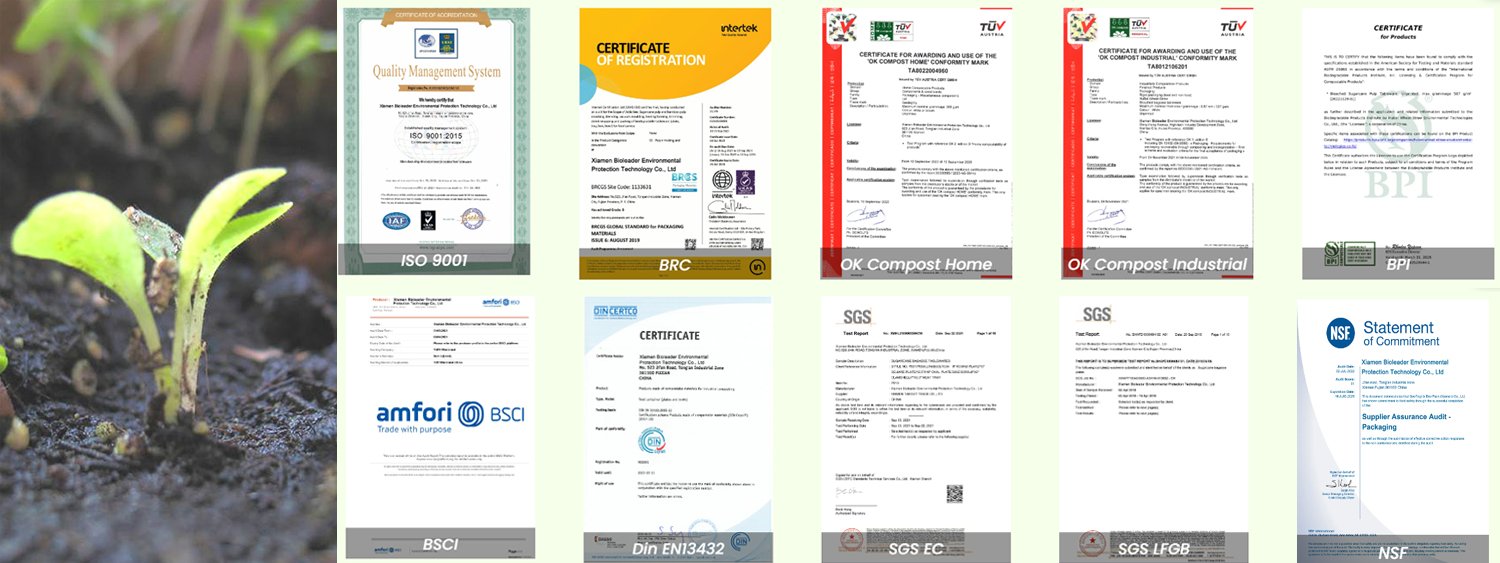500 Years vs. 90 Days: How Biodegradable Tableware Saves Earth
Introduction: The Problem with Plastics
Plastic waste has become one of the most urgent environmental crises of our time. According to a 2022 report by the OECD, the world produces over 430 million tons of plastic annually, and packaging accounts for over 40% of it. Yet only 9% of plastic waste is actually recycled. The rest ends up in landfills, incinerators, or—most worryingly—our oceans and soil.
The major issue? Plastic takes up to 500 years to break down. In contrast, biodegradable tableware can degrade in as little as 90 days, with no microplastics, toxic residue, or long-term harm.
This dramatic contrast is not just a statistic—it’s a call to action. From sugarcane bagasse to kraft paper, today’s biodegradable materials offer scalable, affordable, and environmentally responsible solutions.
What Is Biodegradable Tableware?
Biodegradable tableware is made from organic or plant-based materials that break down naturally through microbial action into water, carbon dioxide, and organic matter. Unlike traditional plastics, these materials decompose in months, not centuries, and contribute to a circular economy.
Key Features:
-
Compostable (industrial or home)
-
Renewable or recycled input sources
-
Free from harmful petrochemicals
-
Suitable for both hot and cold foods
Comparing Materials: What Makes Tableware Truly Compostable?
Different biodegradable materials offer different properties. Here’s a breakdown of the most widely used options in food packaging and how they stack up:
1. Sugarcane Bagasse (Pulp Fiber)
A byproduct of sugarcane juice extraction, bagasse is molded into strong, heat-resistant containers.
Benefits:
-
100% compostable in 60–90 days
-
Microwave and freezer safe
-
Oil and moisture resistant
Best Used For: Clamshell boxes, lunch trays, plates, and bowls
Scientific Insight: Sugarcane bagasse packaging produces 50–70% less CO₂ emissions than polystyrene or PET plastic.
2. Cornstarch-Based Packaging (PLA and CPLA)
Derived from fermented starches (mainly corn), PLA (Polylactic Acid) is a bioplastic ideal for cold items, while CPLA is crystallized for heat tolerance.
Pros:
-
Lower carbon footprint than plastic
-
Versatile for lids, utensils, and cups
-
High transparency (PLA) or high heat resistance (CPLA)
Limitations:
-
Requires commercial composting (not suitable for backyard compost)
-
Not recommended for high-oil or very hot food unless CPLA is used
3. Kraft Paper Tableware
Kraft is made from wood pulp or recycled paper. It is biodegradable, recyclable, and widely used in food wraps and foldable boxes.
Pros:
-
Compostable within 45–60 days (unlined)
-
Lightweight and printable
-
Often paired with PLA for water resistance
Best For: Sandwich wraps, paper trays, burger boxes
Considerations: Choose uncoated or PLA-lined kraft for full biodegradability.
4. Molded Paper and Bamboo Tableware
These include heavy-duty items made from compressed paper pulp or bamboo fibers. While slightly costlier, they’re favored in premium catering settings.
Strengths:
-
Strong and visually appealing
-
Naturally biodegradable and non-toxic
-
Compostable in 90 days or less
Why This Shift Matters: Environmental and Economic Benefits
🌍 1. Waste Volume Reduction
Replacing plastic with biodegradable materials in foodservice can reduce solid waste by up to 90%, according to the Institute for Sustainable Packaging (2023).
💰 2. Compliance with Global Legislation
More than 60 countries have introduced bans or taxes on single-use plastics. Notable examples include:
-
European Union: Full ban on single-use plastic cutlery and plates since 2021
-
China: Non-degradable containers banned in major cities
-
California & Canada: Compostable packaging now mandated in many areas
Switching to compostable materials ensures regulatory compliance and avoids fines or loss of permits.
❤️ 3. Consumer Loyalty and Brand Equity
A 2023 NielsenIQ survey found that 81% of global consumers expect companies to adopt environmentally responsible packaging. Among Gen Z, the figure was 91%.
Businesses that adopt eco-packaging see:
-
Higher repeat business
-
Better customer reviews
-
Enhanced brand reputation
♻️ 4. Supports the Circular Economy
Biodegradable materials re-enter the ecosystem as soil nutrients, promoting regenerative agriculture and reducing landfill dependency.
Case Study: Catering Chain Cuts Plastic Waste by 86%
A mid-sized catering company in Singapore transitioned from plastic and foam to 100% bagasse containers. The results within one year:
-
Plastic waste volume dropped by 86%
-
Company qualified for local sustainability incentives
-
Positive PR coverage led to a 17% revenue increase through new client acquisitions
Challenges to Address
While the benefits are strong, biodegradable packaging still faces challenges:
-
Higher upfront costs than low-grade plastic (though bulk pricing helps offset this)
-
Compost infrastructure gaps in many cities
-
Greenwashing risks: Some products claim biodegradability without certifications
Tip: Look for certified compostability labels like BPI, OK Compost, or EN13432 to ensure authenticity.
FAQ: What People Are Asking on Google
1. What is the difference between biodegradable and compostable tableware?
Compostable items break down into non-toxic elements under specific conditions. All compostables are biodegradable, but not all biodegradable products are certified for composting.
2. Can biodegradable containers hold hot and oily food?
Yes, especially bagasse, CPLA, and bamboo tableware. Always check for heat resistance on the label.
3. How long does it take for biodegradable tableware to decompose?
Depending on the material and composting environment, 45 to 120 days is typical.
4. Are kraft paper containers fully biodegradable?
Only uncoated kraft is compostable at home. Those lined with PLA can still degrade under industrial conditions.
5. Where can I buy biodegradable tableware in bulk?
Manufacturers like Xiamen Bioleader Environmental Protection Technology Co., Ltd. provide OEM services and export biodegradable food packaging worldwide.
Final Thoughts: It's Time to Decompose the Problem
Plastic’s 500-year legacy of pollution is no longer sustainable. The transition to biodegradable tableware isn’t just about avoiding harm—it's about actively healing the planet.
In as little as 90 days, materials like sugarcane bagasse, cornstarch, kraft paper, and bamboo return to the earth—leaving no trace. Businesses that embrace these innovations are not only future-proofing their operations but playing a vital role in planetary regeneration.
If every restaurant, café, and caterer made the switch, the ripple effect on global waste systems would be transformative.
The time to act? Now.



Comments